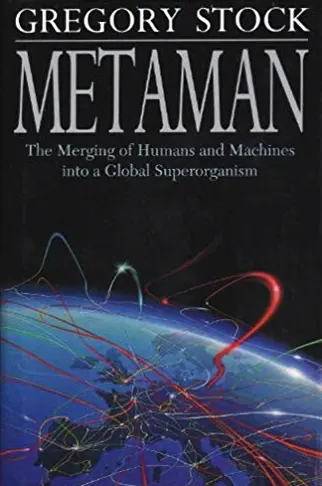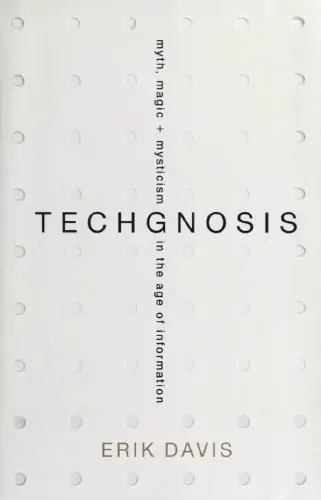The Library of Consciousness
of Consciousness

Metaman
In this visionary book, Gregory Stock gives us a new way of understanding our world and our future. He develops the provocative thesis that human society has become an immense living being: a global superorganism in which we humans, knitted together by our modern technology and communication, are like the cells in an animal's body. Drawing on impressive research, Stock shows this newly formed superorganism to be more than metaphor: it is an actual living creature, which he has named Metaman, meaning beyond and transcending humans.

TechGnosis
How does our fascination with technology intersect with the religious imagination? While the realms of the digital and the spiritual may seem worlds apart, esoteric and religious impulses have in fact always permeated (and sometimes inspired) technological communication. Erik Davis uncovers startling connections between such seemingly disparate topics as electricity and alchemy; online role-playing games and religious and occult practices; virtual reality and gnostic mythology; programming languages and Kabbalah. The final chapters address the apocalyptic dreams that haunt technology, providing vital historical context as well as new ways to think about a future defined by the mutant intermingling of mind and machine, nightmare and fantasy.
The Formation of the Noösphere
The noösphere is the sum-total of mental activity which emerges out of a complex biosphere, and in this essay Teilhard describes how our planet is growing its very own mind.
The Global Brain as a Model of the Future Information Society
The Global Brain paradigm views the emerging global information network connecting humans and technology as a nervous system for Earth's social superorganism. This special issue surveys opportunities and challenges in developing this potentially more intelligent, synergetic system. Contributions explore political, economic, and philosophical aspects, aiming to guide the transition towards a sustainable society empowering diversity.
What is the Noosphere?
Picture Earth evolving a new layer—not of rock or life, but of thought and technology. This “noosphere” is like a planetary brain emerging through our global networks, satellites, and collective intelligence. The paper explores how this mysterious transformation could represent Earth’s next evolutionary leap, potentially leading to planetary consciousness or even contact with other cosmic minds. It’s happening right now, though we’re still figuring out how to guide this planetary metamorphosis.